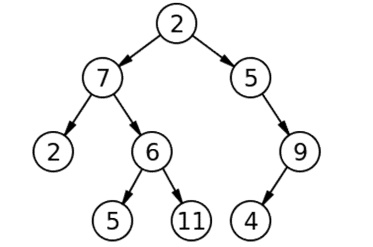Chapter: Object Oriented Programming and Data Structure : Non-Linear Data Structures
Tree - abstract data type (ADT)
TREE
a tree is a widely used abstract data
type (ADT) or data structure implementing this ADT that simulates a
hierarchical tree structure, with a root value and subtrees of children,
represented as a set of linked nodes. A tree data structure can be defined
recursively (locally) as a collection of nodes (starting at a root node), where
each node is a data structure consisting of a value, together with a list of
references to nodes (the "children"), with the constraints that no
reference is duplicated, and none points to the root. Alternatively, a tree can
be defined abstractly as a whole (globally) as an ordered tree, with a value
assigned to each node. Both these perspectives are useful: while a tree can be
analyzed mathematically as a whole, when actually represented as a data
structure it is usually represented and worked with separately by node (rather
than as a list of nodes and an adjacency list of edges between nodes, as one
may represent a digraph, for instance). For example, looking at a tree as a
whole, one can talk about "the parent node" of a given node, but in
general as a data structure a given node only contains the list of its
children, but does not contain a reference to its parent (if any). A simple
unordered tree; in this diagram, the node labeled 7 has two children, labeled 2
and 6, and one parent, labeled 2. The root node, at the top, has no parent.
Definition
A tree is
a non-linear data structure that consists of a root node and potentially many
levels of additional nodes that form a hierarchy. A tree can be empty with no
nodes called the null or empty tree
or a tree is a structure consisting of one node called the root and one or more subtrees.
Terminologies used in Trees
• Root - the top most node in a tree.
• Parent - the converse notion of child.
• Siblings - nodes with the same parent.
• Descendant - a node reachable by repeated
proceeding from parent to child.
• Leaf - a node with no children.
• Internal node - a node with at least one child.
• Degree - number of sub trees of a node.
• Edge - connection between one node to
another.
• Path - a sequence of nodes and edges
connecting a node with a descendant.
• Level - The level of a node is defined
by 1 + the number of connections between the node and the root.
• Height - The height of a node is the
length of the longest downward path between the
node and
a leaf.
• Forest
- A forest is a set of n ≥ 0 disjoint trees.

Related Topics